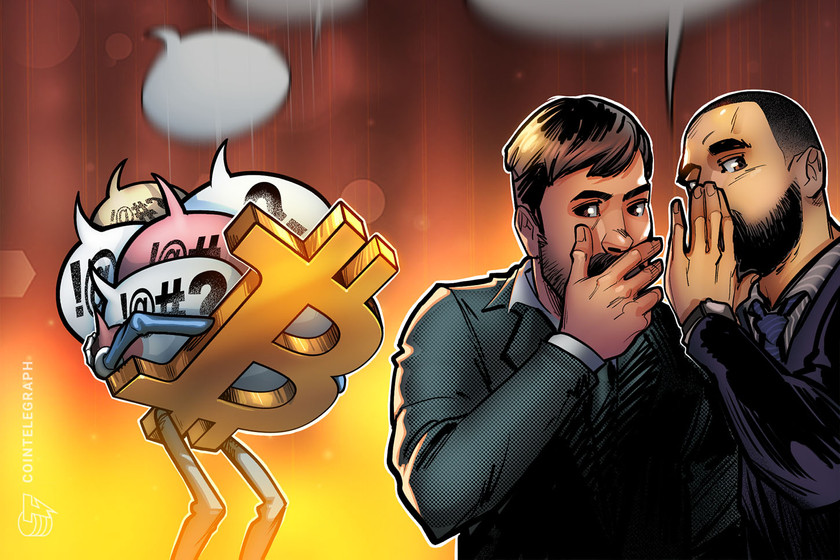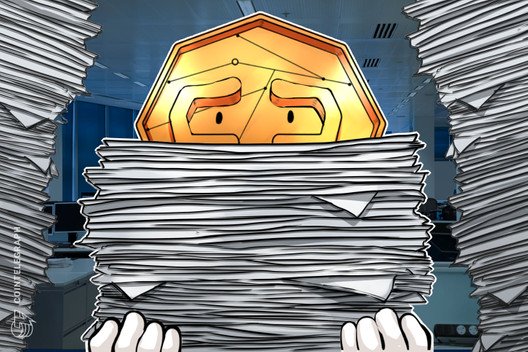No, Bitcoin withdrawals from exchanges are not inherently bullish for crypto
Crypto analysts on X (the social media platform formerly known as Twitter) and in YouTube interviews have been abuzz with talk about the trend of Bitcoin leaving centralized exchanges.
On Aug. 29, the quantity of Bitcoin (BTC) held within exchanges saw a decline, reaching its lowest point since January 2018. While various factors might underlie this movement, experts analyzing blockchain data often interpret the shift as a positive indicator. Traders are now questioning what might have been causing Bitcoin’s inability to break above $31,000 since this price action doesn’t align with their view that fewer coins on exchanges is bullish for the BTC price.
The perspective on the decline of Bitcoin held at centralized exchanges stems from the notion that when traders withdraw their coins, it signals a bullish sentiment. This is typically associated with a strategy of holding assets in self-custody for the long haul.
Although these suppositions lack conclusive evidence, their persistence likely stems from historical precedent. However, establishing a relationship between these events and a specific cause remains elusive, regardless of the frequency of such occurrences. While buying on exchanges might necessitate depositing fiat currency beforehand, the reverse is not necessarily true.
Data fails to show correlation between on-chain metrics and Bitcoin price action
Data from blockchain transactions displays a consistent reduction in Bitcoin deposits on exchanges since mid-May. Concurrently, Bitcoin’s price trajectory fails to offer substantial indications of a bullish upswing, with the exception of a brief surge in mid-June that coincided with BlackRock’s submission of an application for a spot exchange-traded fund.

It’s worth noting that the period encompassing a 30% surge from March 12 to March 19 witnessed an increase in deposits on exchanges, contrasting the predictions of on-chain analysis. Despite this contradiction, instances of influencers addressing the weaknesses in these enduring myths are scarce. This could be attributed to the simplicity of linking deposits on exchanges to an augmented inclination for selling.
Certainly, all indicators are prone to occasional inaccuracies, and depending solely on on-chain analysis to dictate market trends is unwise. Yet, the notion that withdrawals from exchanges are predominantly earmarked for transfer to cold storage lacks substantial grounding and exists largely as a hypothetical proposition. For example, there are three possible reasons that explain reduced deposits on exchanges unrelated to a diminished short-term selling intent.
Bitcoin holders shifted to a reliable custody solution
The foremost explanation for Bitcoin withdrawals from exchanges not necessarily indicating a decrease in short-term selling pressure is the burgeoning trust in custody solutions. This implies that these coins might have been acquired in the past, and only recently has the owner felt at ease moving them. Notably, reputable custodians like Prime Trust took investors by surprise when it sought Chapter 11 bankruptcy protection in Delaware due to a shortage in customer funds. Additionally, a staggering sum of approximately $35 million in crypto assets was pilfered from Atomic Wallet users in June. The prevailing lack of trust in custody solutions could elucidate the cautious approach investors adopted before initiating withdrawals from exchanges.
Investors have lost confidence in centralized exchanges
On June 5, the Securities and Exchange Commission launched a legal suit against Binance, alleging the offering of unregistered securities. Just a day following the Binance lawsuit, the commission turned its focus to Coinbase on analogous grounds, contending that prominent altcoins provided by the exchange meet the criteria for securities. Further compounding matters, an Aug. 2 report from Semafor disclosed that United States Justice Department officials expressed apprehensions about a Binance indictment triggering a run on the exchange, akin to the events surrounding FTX in November 2022. These regulatory actions may have influenced users’ decisions to keep their deposited coins away from exchanges, irrespective of their selling intentions, thus rendering the withdrawals unrelated to price fluctuations.
Decreasing interest from buyers could balance out the trend
Even if one postulates that the majority of the Bitcoin departing from exchanges is indeed headed to cold wallets, implying holders have a reduced propensity to engage in short-term selling, the demand facet of the equation has encountered its own set of challenges. For instance, a search for “buy Bitcoin” on Google Trends has struggled to surpass 50% of its previous two-year peak.

Similarly, Bitcoin’s spot trading volume has averaged a modest $7 billion per day in August, representing less than half the trading activity observed between January and March.

As a result, the data underscores a waning interest from buyers, which in turn mirrors Bitcoin’s lack of bullish momentum. This parallel trend aligns with the decrease in the number of coins being deposited on exchanges. Consequently, despite Bitcoin’s exchange deposits plummeting to levels last seen in 2018, the effect on the supply-demand equilibrium is negligible, owing to the subdued trading activity that has prevailed.
Ultimately, while on-chain metric analysis might provide foundational support for the notion of coins transitioning to the possession of long-term holders, this viewpoint offers scant backing in terms of price dynamics, as the movement may reflect a broader reluctance to actively trade the asset.
This article is for general information purposes and is not intended to be and should not be taken as legal or investment advice. The views, thoughts, and opinions expressed here are the author’s alone and do not necessarily reflect or represent the views and opinions of Cointelegraph.









